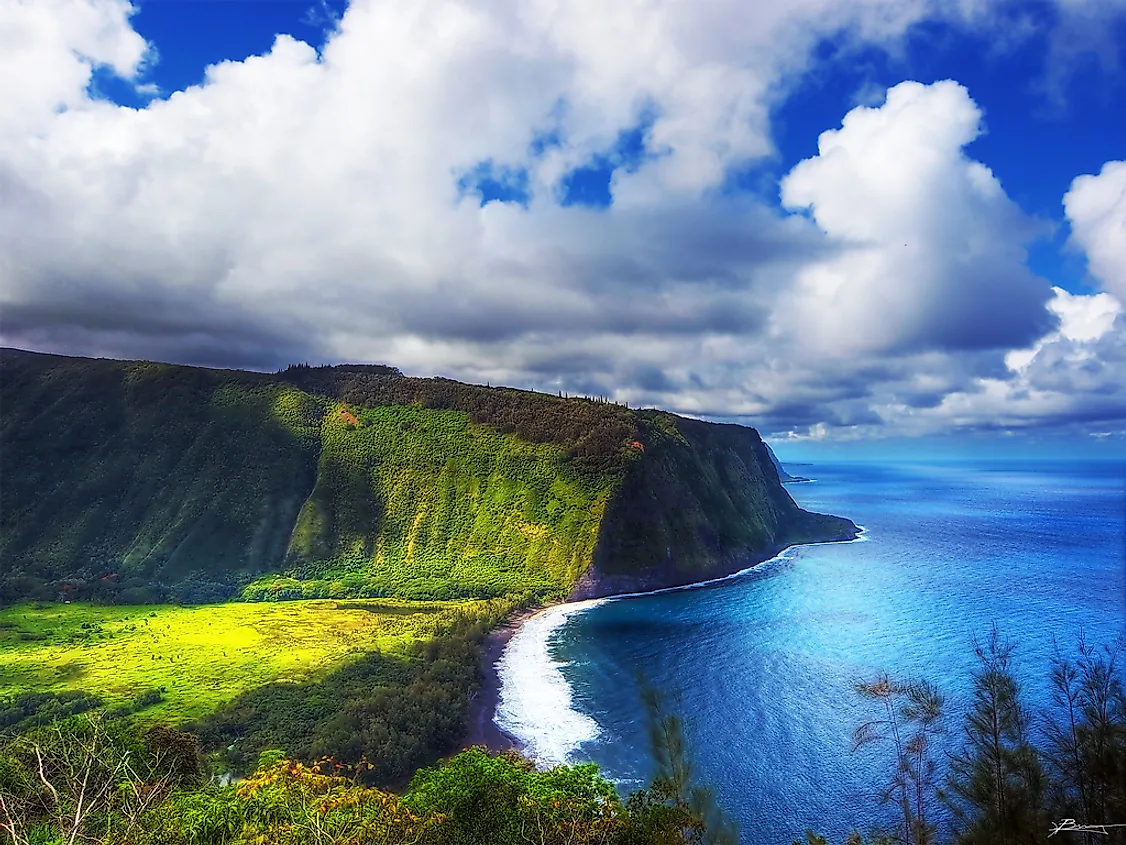The Largest Hawaiian Islands

Hawaii was the 50th state inducted to the US and is located in the Pacific Ocean. This state has the distinction of being the only island state and is actually an archipelago, or group of islands. Hawaii consists of 8 large islands, several coral rings, and numerous islets. The Hawaiian archipelago is located approximately 2,000 miles from the US coast and therefore enjoys a year-round tropical climate. Volcanic activity formed the islands and active volcanoes still abound.
The Biggest Islands
Hawai’i Island
The largest island of the archipelago is Hawai’i. This island encompasses 4,028 square miles and was created by five separate volcanic eruptions. Affectionately nicknamed “Big Island”, no other island in this state comes close to the area size of Hawai’i. Today, the island relies on tourism though it once was a major producer of sugarcane. The agricultural industry is growing and produces papaya, macadamia nuts, and coffee. In fact, the famous Kona coffee comes from the Big Island.
Maui Island
Following Hawai’i in size, though significantly smaller, is the island of Maui. The land area of Maui measure 727 square miles and has distinct environments on either side. The land is dry on the western coast whereas the eastern coast has a lush green rainforest full of waterfalls. Like Hawai’i, the two major contributors to the economy are tourism and agriculture.
Oahu Island
The next island in area size is Oahu at 597 square miles. This island is home to about 66% of the population and is appropriately deemed “The Gathering Place”. The state capital, Honolulu, is located here. Two volcanoes make up the eastern and western parts of the island and in the middle, is the Oahu Plain. Oahu attracts the greatest number of tourists of all the islands. Aside from tourism, clothing and cotton-based product exports make up the majority of the economy.
Kauai Island
Kauai is close in size to Oahu and offers 562 square miles of land area. This island consists of rainforests, beaches, river valleys, sand dunes, ranches, and sugarcane farms. Kauai offers several different micro-climates due to changes in elevation though overall, it is semi-tropical. Again, tourism is the main industry here. Quite a few agricultural products like pineapples and guava are also produced in this island.
Molokai Island
Number 5 in size is the island of Molokai. It is 260 square miles in size (10 miles wide and 38 miles long). Though small in size, Molokai has some of the tallest sea cliffs in the world and the longest barrier reef in Hawaii (which is also the only barrier reef north of Australia. The unemployment rate is high here due to a declining market demand for pineapple. The largest industry is Monsanto seed production (GMO seeds).
Lanai Island
After Molokai is Lanai, a 140 square-mile island. Lanai has 47 miles of coastline and has maintained much of its natural landscape. Pineapple and sugarcane industries have left the island, and residents have tourism as the main economic activity.
Niihau Island
The 7th largest island is Niihau, and it has 69 square miles. It is the westernmost island in the Hawaiian Archipelago, and its highest point is 1,280 feet. Niihau has a dry climate and therefore never produces trees. The majority of the economy is based on a Naval missile testing site which brings in 80% of the income. The tourism on this island is low in number.
Kahoolawe Island
The final Hawaiian in the list island is 45 square-mile Kahoolawe. This island lacks permanent residents due to a dearth of fresh water. The natives use this island for cultural purposes.
Tourism Industry
Hawaii receives over 7 million tourists annually. Due to the tropical climate, it attracts people year-round but especially during the US mainland winter. Nearly a decade ago, the island relied on Japanese tourists as their principal source of income but after the economic recession in Japan, the tourist demographics changed. Now, an increasing number of tourists from China and South Korea visit Hawaii and spend 25% more than Japanese visitors. The state economy has suffered since the economic downturn.
The Largest Hawaiian Islands
| Rank | Island | Area (in square miles) |
|---|---|---|
| 1 | Hawaii/Big Island | 4,028 |
| 2 | Maui | 727 |
| 3 | Oahu | 597 |
| 4 | Kauai | 562 |
| 5 | Molokai | 260 |
| 6 | Lanai | 140 |
| 7 | Niihau | 69 |
| 8 | Kahoolawe | 45 |











